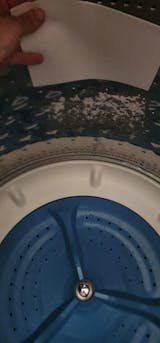
What is a First Edition Book?
When strolling through a vintage bookstore or browsing an online collection, you might come across the term "first edition." For book enthusiasts and collectors, a first edition is a prized possession. But what exactly is a first edition book, and why is it so special? Let's dive in.
Defining a First Edition
At its core, a first edition refers to the first printing of a book. It means that the book you're holding is among the very first batch that was ever printed and released to the public. Once this batch sells out and the publisher decides to print more copies, the subsequent batches are termed subsequent editions or printings.
The Value of a First Edition
1. Historical Significance: First editions often hold historical value, representing the original form in which a work was presented to the world. Over time, books might undergo edits, revisions, or updates, making the first edition a snapshot of the author's original intent.
2. Rarity: As the first batch of prints, first editions are typically produced in limited quantities. This rarity can increase their value, especially for iconic works or books that gain popularity after their initial release.
3. Collectability: For book collectors, owning a first edition is a matter of pride. It's a tangible connection to the history of literature and the author's journey.
Identifying a First Edition
Identifying a first edition can sometimes be tricky. Here are some general guidelines:
1. Publisher's Number Line: Many modern publishers use a number line (e.g., "10 9 8 7 6 5 4 3 2 1") to indicate the printing. The presence of "1" typically indicates a first printing of that edition.
2. Publisher's Statement: Some books might have a statement like "First Edition" or "First Printing" on the copyright page.
3. Consult a Bibliography: For older books or those without clear indications, consulting a bibliography or a book about the author's works can provide insights.
4. Seek Expert Advice: If in doubt, consult a bookseller or a book appraiser. They have the expertise to authenticate a book's edition.
Caring for a First Edition
If you own or are thinking of purchasing a first edition, here are some care tips:
1. Keep Away from Direct Sunlight: Sunlight can fade the cover and pages of a book.
2. Avoid Moisture: Store your books in a dry place. Humidity can cause mold and damage to the pages.
3. Handle with Clean Hands: Oils and dirt from our hands can degrade the book over time.
4. Use Acid-Free Book Covers: Protect your book from dust and external factors using an acid-free cover.
In Conclusion
A first edition book is more than just another copy; it's a piece of literary history. Whether you're a seasoned collector or someone who stumbled upon an old book in the attic, understanding and appreciating the value of first editions can enrich your reading experience.
Defining a First Edition
At its core, a first edition refers to the first printing of a book. It means that the book you're holding is among the very first batch that was ever printed and released to the public. Once this batch sells out and the publisher decides to print more copies, the subsequent batches are termed subsequent editions or printings.
The Value of a First Edition
1. Historical Significance: First editions often hold historical value, representing the original form in which a work was presented to the world. Over time, books might undergo edits, revisions, or updates, making the first edition a snapshot of the author's original intent.
2. Rarity: As the first batch of prints, first editions are typically produced in limited quantities. This rarity can increase their value, especially for iconic works or books that gain popularity after their initial release.
3. Collectability: For book collectors, owning a first edition is a matter of pride. It's a tangible connection to the history of literature and the author's journey.
Identifying a First Edition
Identifying a first edition can sometimes be tricky. Here are some general guidelines:
1. Publisher's Number Line: Many modern publishers use a number line (e.g., "10 9 8 7 6 5 4 3 2 1") to indicate the printing. The presence of "1" typically indicates a first printing of that edition.
2. Publisher's Statement: Some books might have a statement like "First Edition" or "First Printing" on the copyright page.
3. Consult a Bibliography: For older books or those without clear indications, consulting a bibliography or a book about the author's works can provide insights.
4. Seek Expert Advice: If in doubt, consult a bookseller or a book appraiser. They have the expertise to authenticate a book's edition.
Caring for a First Edition
If you own or are thinking of purchasing a first edition, here are some care tips:
1. Keep Away from Direct Sunlight: Sunlight can fade the cover and pages of a book.
2. Avoid Moisture: Store your books in a dry place. Humidity can cause mold and damage to the pages.
3. Handle with Clean Hands: Oils and dirt from our hands can degrade the book over time.
4. Use Acid-Free Book Covers: Protect your book from dust and external factors using an acid-free cover.
In Conclusion
A first edition book is more than just another copy; it's a piece of literary history. Whether you're a seasoned collector or someone who stumbled upon an old book in the attic, understanding and appreciating the value of first editions can enrich your reading experience.






